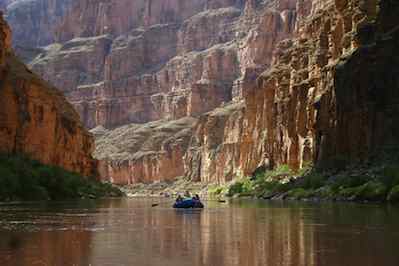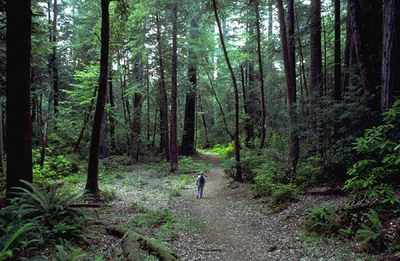- MENU
- HOME
- SEARCH
- WORLD
- MAIN
- AFRICA
- ASIA
- BALKANS
- EUROPE
- LATIN AMERICA
- MIDDLE EAST
- United Kingdom
- United States
- Argentina
- Australia
- Austria
- Benelux
- Brazil
- Canada
- China
- France
- Germany
- Greece
- Hungary
- India
- Indonesia
- Ireland
- Israel
- Italy
- Japan
- Korea
- Mexico
- New Zealand
- Pakistan
- Philippines
- Poland
- Russia
- South Africa
- Spain
- Taiwan
- Turkey
- USA
- BUSINESS
- WEALTH
- STOCKS
- TECH
- HEALTH
- LIFESTYLE
- ENTERTAINMENT
- SPORTS
- RSS
- iHaveNet.com: Travel
By Debbie K. Hardin
National parks exert a primeval pull on visitors from around the world, who come by the millions to drink in their natural wonders. The astounding beauty of these wild places, preserved for the benefit of future generations, is almost spiritual for many. In addition, they offer limitless possibilities for outdoor adventures like hiking, rafting, kayaking, fishing, camping, rock climbing, horseback riding and wildlife spotting.
There are 391 national parks in the United States. Each offers a unique experience, and a visit to any is a worthy trip. But, some parks are worthier than others. Here are my picks for five essential national parks.
5 National Parks to See Before You Die
YOSEMITE NATIONAL PARK
For scenery that will take your breath away, Yosemite National Park (www.nps.gov/yose) in central California is unmatched. Iconic granite cliffs like the picturesque Half Dome and El Capitan, expansive vistas of glacier-carved valleys like Tuolumne Meadows and Yosemite Valley, and the thunderous waters of Yosemite Falls and Bridalveil Fall act like balm to city-weary souls.
One of the best ways to see these jaw-dropping scenes is aboard a raft, floating along the gentle Merced River. Bring your own or rent small inflatable boats at the
Landlubbers can rent bikes to explore the paved pathways that follow the river's route, or hike one of the dozens of trails that crisscross the park. Avid rock climbers know that Yosemite also offers world-class climbing opportunities. And camping enthusiasts will find a handful of campgrounds, which, while often crowded, offer better proximity to Yosemite attractions than the somewhat pricey in-park lodges.
YELLOWSTONE NATIONAL PARK
This geological hotspot that stretches across the western portion of northern Wyoming and southern Montana is the best place in the world to check out the spewing geysers, bubbling mud pots and gently stewing hot springs. In addition to the park's superstar, Old Faithful, geyser gazers will find hundreds of thermal features in the surrounding Upper Geyser Basin and nearby Midway Geyser Basin, site of the gloriously colorful nearly 370-foot-wide Grand Prismatic Spring.
Yellowstone (www.nps.gov/yell) is also one of the best places in the lower 48 to spot wildlife. Bring binoculars or telescopes to one of the dozens of roadside pullouts overlooking the majestic Hayden Valley -- known as the Serengeti of the United States -- to look for massive buffalo herds moving slowly across the grasslands (and sometimes across the roadway, resulting in a memorable "buffalo jam"), lone grizzly bears galumphing along the mountain ranges, stealthy wolves hunting beside waterways and rival elk bucks crashing their massive antlers.
GRAND CANYON NATIONAL PARK

A mile-deep gorge that stretches nearly 300 miles across northern Arizona, the Grand Canyon (www.nps.gov/grca) is ablaze with the fiery colors of eons' worth of rock layers that hold the secret to the history of the geological world. Brightly hued rock outcroppings, ethereal stone spires, massive plateaus and innumerable hidden interior canyons offer hikers a lifetime of exploring via one of the several trails that lead into the heart of the abyss from either the popular South Rim or the less-traveled North Rim.
But for real adventure, book a multi-day white-water rafting tour that takes hearty guests through virgin stretches of the Colorado River as it courses along the floor of the canyon. Thanks to stunning hidden waterfalls and deserted stretches along the river, the park has a cult-like following among backpackers as well.
REDWOOD NATIONAL PARK

Stand in awe alongside the tallest living organisms in the world at Redwood National Park (www.nps.gov/redw), in coastal northern California. This lush park (which also encompasses three state parks) preserves the remnants of what was once a 2-million-acre forest of giants. The peaceful and otherworldly atmosphere here makes it difficult to get a sense of time: Its deeply shaded interior looks to be out of the Jurassic age. It's almost impossible to get a sense of scale, too, because the titular trees are so massive.
Don't miss the chance to hike the Coastal Trail, in the Prairie Creek State Park section, a day hike through redwoods that offers spectacular views of the ocean. Take a shortcut to Hidden Beach to walk along the rugged coastline, which is often dotted with pretty gnarled driftwood and almost always serenely deserted.
DENALI NATIONAL PARK
The crown jewel of Denali in central Alaska is the perpetually snow-capped Mount McKinley (named Denali by Athabaskan tribes), the tallest mountain in North America, which stretches more than 20,000 feet skyward. Visitors will find this park wilder and less congested (and less accessible) than most other national parks in the system.
The beautiful yet rough terrain and inhospitable climate (which is prohibitive for humans in all seasons except summer) and limited roadways (most of which are accessible only via park-operated tour buses) encourage wildlife to claim the park as their own. Mother grizzlies frolic with cubs within yards of humans; snow-white Dall sheep with whimsical whorling antlers scramble along rocky cliffs; caribou graze on the tundra; plump ptarmigan (pure-white birds in winter and mottled in summer) scatter on the roadside -- all seemingly oblivious to the presence of people.
For a peek at tamer animals, visit the park kennels, which house the sled dogs that make winter transportation possible for park rangers. During the summer, animal handlers conduct three demonstrations a day with these Alaskan huskies.
© Travel Muse Distributed by Tribune Media Services, Inc.
AUTOS | HOBBIES | EDUCATION | FAMILY | FASHION | FOOD & RECIPES | HOME DECOR | RELATIONSHIPS | PARENTING | PETS | TRAVEL | WOMEN
Vacation Travel - 5 National Park Treasures to Visit Before You Die